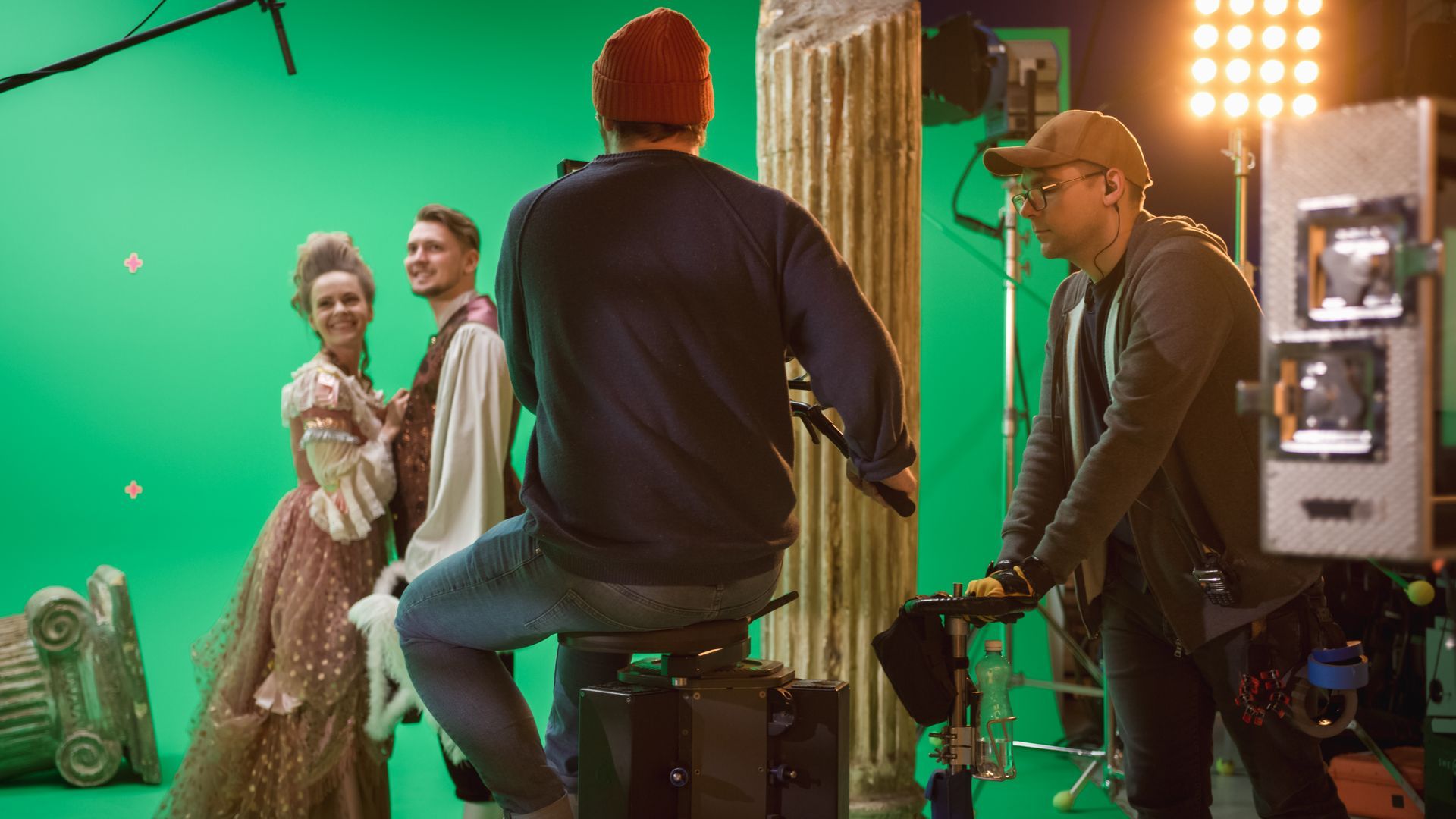What is UGC? The Power of User-Generated Content

If it's beginning to feel like you're drowning in a world of content online, you're not imagining things. According to one recent study, in 2022 alone roughly 82% of all global Internet traffic was attributed to video streaming and downloads. Things have gotten to the point where the average Internet user spends about six hours and 48 minutes every week watching videos on their computer or smartphone.
It's no surprise that more content is being created than ever. People have an insatiable urge for it and both brands and the larger professional video production industry have certainly taken notice. But at a certain point, creating all that content yourself can feel like an insurmountable task - a goal that keeps getting harder and harder to complete. One option to go with to help with this is to enlist the help of a team of professionals like those at TV Pro Gear to help. You can also leverage user-generated content (UGC), but due to its somewhat unpredictable nature it does require you to keep a number of essential things in mind along the way.
Introduction to User-Generated Content (UGC)
At its core, user-generated content is exactly what it sounds like - original, branded content that is created not by a business, but by its own users and customers.
It can come in many different forms depending on the goal of the content creator. Sometimes a brand might host a contest to encourage users to send in videos of them using a specific product in unique and creative ways. We see user-generated content a lot in the world of podcasts, where fans will take it upon themselves to host a weekly show dissecting the latest episode of their favorite program. User-generated content can come by way of images, reviews, product testimonials, and especially videos. They are often shared on social media channels like Facebook and Twitter, and on other outlets like official websites as well.
Thanks to the fact that most people now carry smartphones with powerful cameras around with them all day long, user-generated content is everywhere. Millennials - meaning those over the age of 25 - tend to make up the biggest segment, having generated over 70% of all UGC to date. Things have gotten to the point where it is estimated that 25% of all search results for some of the biggest brands on the planet now link to user-generated content of some kind.
The Power of UGC in Marketing and Advertising
Naturally, this has had a major impact on marketing and advertising in particular. It all stems from the fact that 90% of consumers all say that "authenticity" is one of the most important qualities that they look for when choosing a brand to support. Even though this is already a high number, it's even more impressive when you consider that it is up from 86% just a few years prior in 2017.
Another recent study indicated that 93% of all professional marketers agree that consumers tend to trust user-generated content - meaning videos that are being created by "real" people - more than first-party content created by brands. This, coupled with the fact that 79% of people say that user-generated content "highly impacts" their purchasing decisions, all feed back into this same larger idea.
In a lot of ways, think about user-generated content as the modern day version of the classic "word of mouth" in marketing and advertising. People have long-lost their patience for traditional advertising in the strictest sense of the term, to the point where most people ignore the paid ads on search engines like Google entirely. They've even begun wary of a cold, impersonal experience on various social media channels when dealing directly with brands, too.
But people will always trust other people, which is why user-generated content is having such a big impact on the marketing and advertising industries. Millennials in particular say that they trust UGC 50% more than other types of content. This also helps to explain why even ads that feature user-generated content tend to get click-through rates that is four times higher than traditional ads, all while seeing a 50% reduction in the cost-per-click as well.
If a brand is to be successful, it must create a legitimate relationship with its target audience built on trust. User-generated content goes a long way towards accomplishing precisely that, albeit in a slightly indirect way for obvious reasons.
Challenges and Limitations of UGC
Of course, that's not to say that there aren't challenges and various limitations associated with user-generated content, because there are. This is a big part of the reason why content created by brands directly will never truly go away. It gives new meaning to the phrase "never put all of your eggs in one basket."
One major challenge of UGC has to do with the general unpredictable nature of Internet users in general. For the sake of example, let's say that you launch one campaign where users send in their own videos using your product or embracing your service for an opportunity to win a prize. It's a great success and helps generate higher engagement and huge numbers of new customers.
Then, you try it again... and you don't get anywhere near the type of traction you did the first time. Maybe there was another, similar campaign that was running at the same time that took away all the attention from you. Maybe there was some major world event, causing your online activities to get lost in the news cycle. Perhaps people just weren't interested in whatever prize they were competing for a chance to win.
Regardless, if you'd just assumed that the initial success was easily repeatable, you'd find yourself scrambling to quickly come up with some other avenue to generate the quarterly results that you were after. Remember that UGC does take a lot of effort to create - it's just that the entire burden is being placed on the users, not the business. Sometimes, they just won't be motivated to participate in the numbers you'd hoped and there isn't much you can do to change that.
Along the same lines, a poorly executed user-generated campaign could potentially do more harm than good. If you encourage people to create videos using and interacting with a product that they don't end up actually liking (or worse, outright hate), the negative word-of-mouth will quickly grow beyond your control. The same is true if you encourage people to leave video reviews and your product doesn't work as intended. Not only could it hurt the sales of that particular product, but it may also harm your business' overall conversions as well. This is why you need to think through UGC campaigns in every bit as much detail as you would anything else.
Finally, don't forget that you ultimately can't control what types of content the users are generating once the process has begun in earnest. One example of this is people creating videos with complaints or leaving reviews about issues that are entirely unrelated to the product itself. Perhaps it was a simple issue with people using the product incorrectly or not understanding the directions. Maybe they were shipped the wrong product through no fault of the manufacturer. Either way, that content is now out there on the Internet for anyone to see, and it could become permanently associated with a business.
Likewise, while this is rare, sometimes user-generated content can be created by people with views or values that are very different from that which you are trying to project with your brand. At best that content would then be seen as untrustworthy and at worst it could potentially be outright offensive to many - either way, that stigma is now associated with your business.
Real-Life Examples of UGC Success
One great example of a successful UGC campaign took the form of Pringles' popular "Personalized Music Videos" campaign. After interacting with Pringles' branded chatbot on Facebook Messenger, fans would then download a dedicated app and create music video content that featured various Pringles products. It was an opportunity for people to express their love of Pringles through creativity and music.
The grand prize for the best video that was eventually selected was a trip to the famous Ibiza Rocks festival.
Another example of what UGC can help you accomplish comes by way of Apple's "Shot on iPhone" campaign. Every year, Apple releases a new wildly popular series of iPhones to the market. For the last several years, the breakout feature has been the camera. It has advanced to the point where Apple has begun to claim that it now offers the same quality that a professional-grade camera can in terms of both still photography and video production, and they launched a successful UGC campaign in order to prove it.
It's a campaign that has been taking place every year since 2014. The 10 winning user-generated entries, all of which were shot on that year's latest iPhone release, get celebrated in a gallery on Apple Newsroom, get featured on the Apple homepage, and get shared by official Apple accounts on social media. Sometimes they even appear in various other digital campaigns, on billboards, and at Apple Store locations across the country.
It's an admittedly simple idea that never fails to get the word out about how much Apple's iPhone camera is improving year-over-year. When your camera has gotten so good that parts of Hollywood feature films like "The Avengers" are being shot on it, it's naturally to want to spread that message to as many potential buyers as possible.
The Future of UGC and its Impact on the Professional Video Production Industry
In the end, UGC certainly has its place - particularly in terms of marketing and advertising. Having said that, it isn't necessarily a replacement for hiring a professional video production company for most brands. This is especially true for many of the reasons outlined above.
UGC removes control of the narrative that a brand may be trying to convey. Once that UGC is out into the world, it's easy for it to take on a life of its own. Likewise, while these types of videos can sometimes go viral, they will almost always lack the quality and professionalism that an experienced team of professionals can offer. They will also typically be created with consumer-grade equipment as opposed to high-end gear.
At TV Pro Gear, we have the talent, the creativity, and the expertise needed to bring your video content to life. In addition to traditional content, we also have experience with live event shooting and streaming as well. Not only that, but we also offer access to resources that most brands otherwise wouldn't have - with our stage and post-production facilities being two prime examples.
We also offer TV Pro Gear Flypacks that are designed to make sure you have everything you need to shoot, broadcast, and stream events like sports, conferences, concerts, and everything in between.
If you'd like to find out more information about the awesome power of user-generated content and the major positive impact that it can have on your business, or if you'd just like to talk about your video production needs with an expert in a bit more detail, please don't hesitate to contact the team at TV Pro Gear today.
Recent Posts
©TV Pro Gear 2022. All Rights Reserved. Privacy Policy





